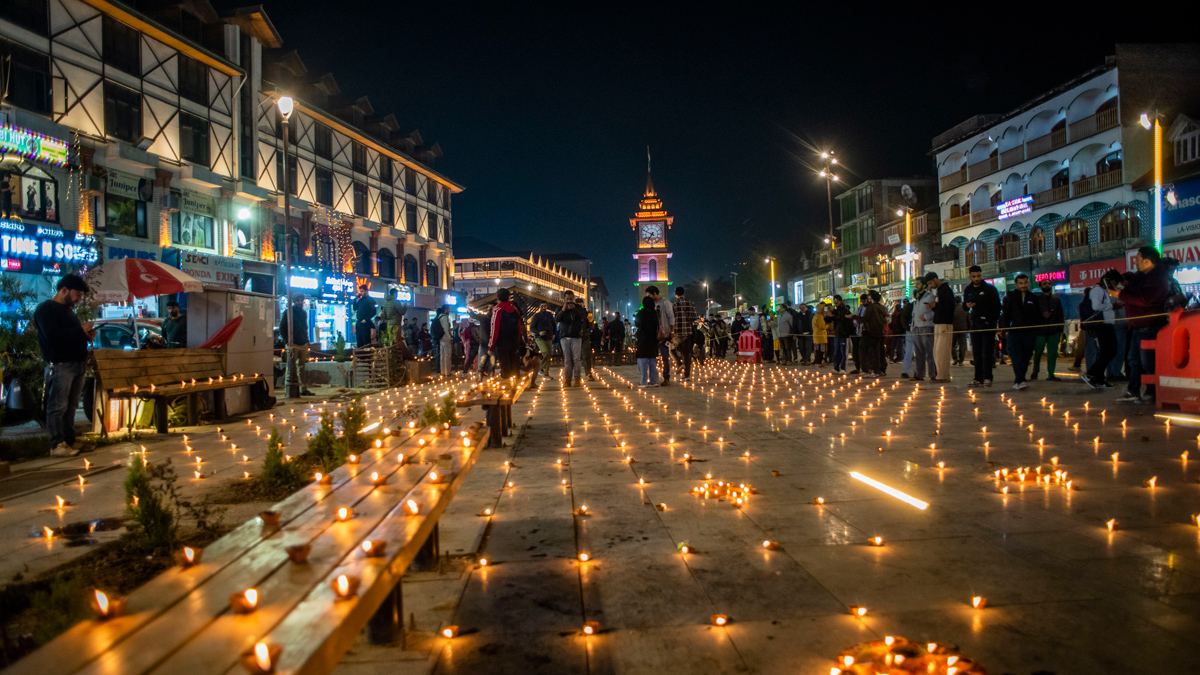Your favorite social media marketing event is headed to NYC this May 12–14! Register for Social Media Week before December 16 to lock in early-bird rates and save 50% on your pass.
As 1 billion people worldwide get ready to celebrate Diwali, known as the festival of lights, brands are also looking to enter this cultural moment and capitalize on this holiday.
Target is selling a wide range of Diwali items, including books, food, decorations and games. Costco is selling a 10-piece Diwali Diya set. Hallmark has a range of Diwali greeting cards. Anastasia Beverly Hills had a Diwali collaboration makeup set in partnership with influencer Aditya Madiraju that sold out in less than 14 hours online. And Cartier hosted their first-ever Diwali party at their mansion on Fifth Avenue in New York City this year.
As the child of Indian immigrants who grew up in the U.S., I was bullied for being different: for eating different foods, for listening to different music, and for celebrating different holidays. It’s heartening to see my children growing up in an environment where holidays like Diwali are being embraced by so many. As marketers, it’s our responsibility to enter these cultural moments authentically and respectfully. Here are three things to keep in mind if we want to get Diwali right.
Understand what Diwali means
For my children, who are third-generation Indian American, some of their fondest memories with their grandparents, aunt, uncle, and cousins have been centered around Diwali.
Dressing up in Indian outfits that were brought from India. Helping with stringing up lights, flowers, and other decorations. Lining up diya lamps, sitting and sometimes squirming while their grandparents say prayers, and waiting for the moment they can devour Indian rotis and sweets and slurp down mango lassi. Lighting sparklers together and setting off fireworks on the long driveway as the family heads in to exchange gifts and play a competitive game of Crazy Sevens that goes into the late hours of the evening.
Diwali (also known as Deepavali, meaning a row of lights) is one of the most important festivals in the Hindu religion. It also holds meaning for Jains, Sikhs, and Buddhists and is celebrated not just in India but all over the world.
Diwali symbolizes the victory of light over darkness, and understanding its meaning and significance is important. As marketers, our job is to understand the moments that matter to our consumers as they celebrate this holiday to avoid checking the box and trying to capitalize on Diwali in the marketplace without understanding the details. Only when we understand all of these interactions and the memories individuals will make celebrating with loved ones can we authentically show up for them during Diwali.
Partner with South Asian founder-led brands
When honoring and celebrating Diwali, big brands have an opportunity to partner with South Asian founder-led brands that are celebrating the holiday.
Fashion designer Anita Dongre collaborated with Mattel for its first-ever Barbie Diwali doll. Megha Rao, founder of holiCHIC, which focuses on South Asian-inspired contemporary fashion, is partnering with Jashn Productions and Diwali Dance Fest at Disney Resorts. Rao and the brand will be showcasing holiCHIC’s latest styles.
Along with Rao, there’s a host of incredible South Asian founders that bigger brands should look to collaborate with, including Priyanka Ganjoo, founder and CEO of makeup brand Kulfi; Rooshy Roy, founder and CEO of hair and skin brand Aavrani; Maya Kaimal, founder and chief creative officer of Indian-inspired food brand Maya Kaimal Foods, featured in Target’s Diwali section; and Alak Vasa, co-founder of ayurveda-powered chocolate and snack brand Elements Truffles, who also created a Diwali Gift Box with Michelin-star chef Vikas Khanna.
While marketers can also create their own Diwali products, content, and campaigns, partnering with South Asian founder-led brands helps you navigate the fine line between cultural appropriation and cultural appreciation. By partnering with founders and their brands who understand and celebrate the holiday, you can show your authentic commitment to the community. You can also serve as an ally, using your brand’s large platforms to shine a spotlight on these amazing smaller businesses.
Serve the South Asian community 365 days a year
Finally, remember that Diwali is not the only time to speak to the South Asian community.
Today in the U.S., South Asian Americans are the second-largest immigrant group at 5.1 million individuals. This community includes individuals with ancestry from India, Pakistan, Bangladesh, Bhutan, Nepal, Sri Lanka, and the Maldives.
While South Asian Americans only make up 1.5% of the country’s population, they have significant buying power and cultural influence and can often be an overlooked consumer group. The average Indian American household earns more “than twice as much as the U.S. average, $150,000 annually compared with around $70,000.” And they pay 5-6% of all income taxes.
From yoga to ayurvedic medicine practices, from chai tea to South Asian cuisine, and from Bollywood music to South Asian designers, South Asian culture continues to have a significant impact on U.S. culture and the fabric of our society. As marketers, Diwali shouldn’t be the only time we choose to market and partner with this community. It’s time we move from this community being an overlooked consumer group, to serving with authenticity and purpose the South Asian community 365 days a year.




